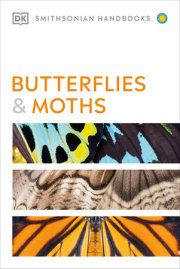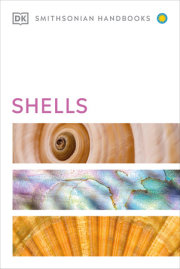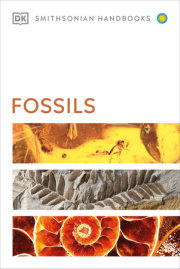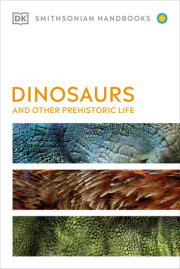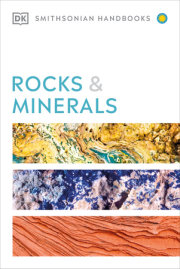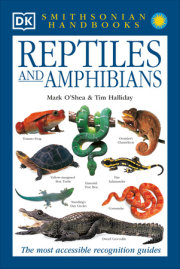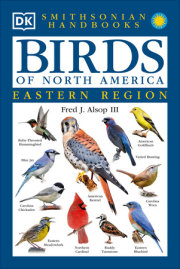The clearest, most accessible guide to observing the night sky.
Introducing the Handbook of Stars and Planets - the perfect beginner's guide to the night sky!
With a highly visual introduction that explains the basic concepts of astronomy and gives advice on the best methods and equipment for observation, including binoculars and telescopes, exploring the cosmos and more has never been easier or more accessible. Each of the planets in the Solar System is described and illustrated in detail, with images taken from space probes as well as from the ground, showing them as you can expect to see them.
More than 160 star charts were made especially for this book by the Royal Greenwich Observatory. There is a separate detailed chart for each of the 88 constellations, adding up to a complete atlas of the sky. The text for each constellation reveals its history and mythology and lists notable stars, galaxies, nebulae, and other objects. Alongside the constellation profiles is a month-by-month guide, including a set of charts and a user-friendly text guide that picks out the highlights above your head each month.
Soar into the pages of this awe-inspiring astronomy book to explore:
- Introduction section provides an accessible primer on the basics of astronomy and skywatching
- Equipment section includes a guide to the main kinds of binoculars, telescopes, and camera equipment
- Practical advice also includes observing the sky with the naked eye
- Profiles of planets and constellations include color-coded data tables, delivering fast facts for quick reference
- Accesible text explains concepts clearly and guides the reader from beginner to intermediate-level astronomer
This newly updated guide to the Solar System includes new discoveries, revised data, and the latest images from space probes! The revisions to constellation and monthly sky guides include new data on stars and other objects such as galaxies, as well as a refreshed guide to binoculars, telescopes, and cameras. Complete with jargon-free text written by one of the foremost popularizers of astronomy and an authority on the history of constellations, the DK Handbook of Stars and Planets is the perfect introduction to stargazing! So whether you’re a budding astronomer or an intermediate space savvy, this great guide to the night sky is suitable for children aged 12+ and adults alike, and promises something for everyone to explore, discover and love!
Introducing the Handbook of Stars and Planets - the perfect beginner's guide to the night sky!
With a highly visual introduction that explains the basic concepts of astronomy and gives advice on the best methods and equipment for observation, including binoculars and telescopes, exploring the cosmos and more has never been easier or more accessible. Each of the planets in the Solar System is described and illustrated in detail, with images taken from space probes as well as from the ground, showing them as you can expect to see them.
More than 160 star charts were made especially for this book by the Royal Greenwich Observatory. There is a separate detailed chart for each of the 88 constellations, adding up to a complete atlas of the sky. The text for each constellation reveals its history and mythology and lists notable stars, galaxies, nebulae, and other objects. Alongside the constellation profiles is a month-by-month guide, including a set of charts and a user-friendly text guide that picks out the highlights above your head each month.
Soar into the pages of this awe-inspiring astronomy book to explore:
- Introduction section provides an accessible primer on the basics of astronomy and skywatching
- Equipment section includes a guide to the main kinds of binoculars, telescopes, and camera equipment
- Practical advice also includes observing the sky with the naked eye
- Profiles of planets and constellations include color-coded data tables, delivering fast facts for quick reference
- Accesible text explains concepts clearly and guides the reader from beginner to intermediate-level astronomer
This newly updated guide to the Solar System includes new discoveries, revised data, and the latest images from space probes! The revisions to constellation and monthly sky guides include new data on stars and other objects such as galaxies, as well as a refreshed guide to binoculars, telescopes, and cameras. Complete with jargon-free text written by one of the foremost popularizers of astronomy and an authority on the history of constellations, the DK Handbook of Stars and Planets is the perfect introduction to stargazing! So whether you’re a budding astronomer or an intermediate space savvy, this great guide to the night sky is suitable for children aged 12+ and adults alike, and promises something for everyone to explore, discover and love!
About
The clearest, most accessible guide to observing the night sky.
Introducing the Handbook of Stars and Planets - the perfect beginner's guide to the night sky!
With a highly visual introduction that explains the basic concepts of astronomy and gives advice on the best methods and equipment for observation, including binoculars and telescopes, exploring the cosmos and more has never been easier or more accessible. Each of the planets in the Solar System is described and illustrated in detail, with images taken from space probes as well as from the ground, showing them as you can expect to see them.
More than 160 star charts were made especially for this book by the Royal Greenwich Observatory. There is a separate detailed chart for each of the 88 constellations, adding up to a complete atlas of the sky. The text for each constellation reveals its history and mythology and lists notable stars, galaxies, nebulae, and other objects. Alongside the constellation profiles is a month-by-month guide, including a set of charts and a user-friendly text guide that picks out the highlights above your head each month.
Soar into the pages of this awe-inspiring astronomy book to explore:
- Introduction section provides an accessible primer on the basics of astronomy and skywatching
- Equipment section includes a guide to the main kinds of binoculars, telescopes, and camera equipment
- Practical advice also includes observing the sky with the naked eye
- Profiles of planets and constellations include color-coded data tables, delivering fast facts for quick reference
- Accesible text explains concepts clearly and guides the reader from beginner to intermediate-level astronomer
This newly updated guide to the Solar System includes new discoveries, revised data, and the latest images from space probes! The revisions to constellation and monthly sky guides include new data on stars and other objects such as galaxies, as well as a refreshed guide to binoculars, telescopes, and cameras. Complete with jargon-free text written by one of the foremost popularizers of astronomy and an authority on the history of constellations, the DK Handbook of Stars and Planets is the perfect introduction to stargazing! So whether you’re a budding astronomer or an intermediate space savvy, this great guide to the night sky is suitable for children aged 12+ and adults alike, and promises something for everyone to explore, discover and love!
Introducing the Handbook of Stars and Planets - the perfect beginner's guide to the night sky!
With a highly visual introduction that explains the basic concepts of astronomy and gives advice on the best methods and equipment for observation, including binoculars and telescopes, exploring the cosmos and more has never been easier or more accessible. Each of the planets in the Solar System is described and illustrated in detail, with images taken from space probes as well as from the ground, showing them as you can expect to see them.
More than 160 star charts were made especially for this book by the Royal Greenwich Observatory. There is a separate detailed chart for each of the 88 constellations, adding up to a complete atlas of the sky. The text for each constellation reveals its history and mythology and lists notable stars, galaxies, nebulae, and other objects. Alongside the constellation profiles is a month-by-month guide, including a set of charts and a user-friendly text guide that picks out the highlights above your head each month.
Soar into the pages of this awe-inspiring astronomy book to explore:
- Introduction section provides an accessible primer on the basics of astronomy and skywatching
- Equipment section includes a guide to the main kinds of binoculars, telescopes, and camera equipment
- Practical advice also includes observing the sky with the naked eye
- Profiles of planets and constellations include color-coded data tables, delivering fast facts for quick reference
- Accesible text explains concepts clearly and guides the reader from beginner to intermediate-level astronomer
This newly updated guide to the Solar System includes new discoveries, revised data, and the latest images from space probes! The revisions to constellation and monthly sky guides include new data on stars and other objects such as galaxies, as well as a refreshed guide to binoculars, telescopes, and cameras. Complete with jargon-free text written by one of the foremost popularizers of astronomy and an authority on the history of constellations, the DK Handbook of Stars and Planets is the perfect introduction to stargazing! So whether you’re a budding astronomer or an intermediate space savvy, this great guide to the night sky is suitable for children aged 12+ and adults alike, and promises something for everyone to explore, discover and love!
Author
Back to Top
Notifications








